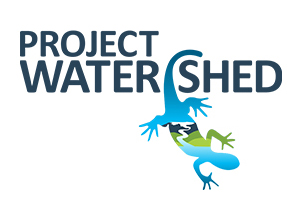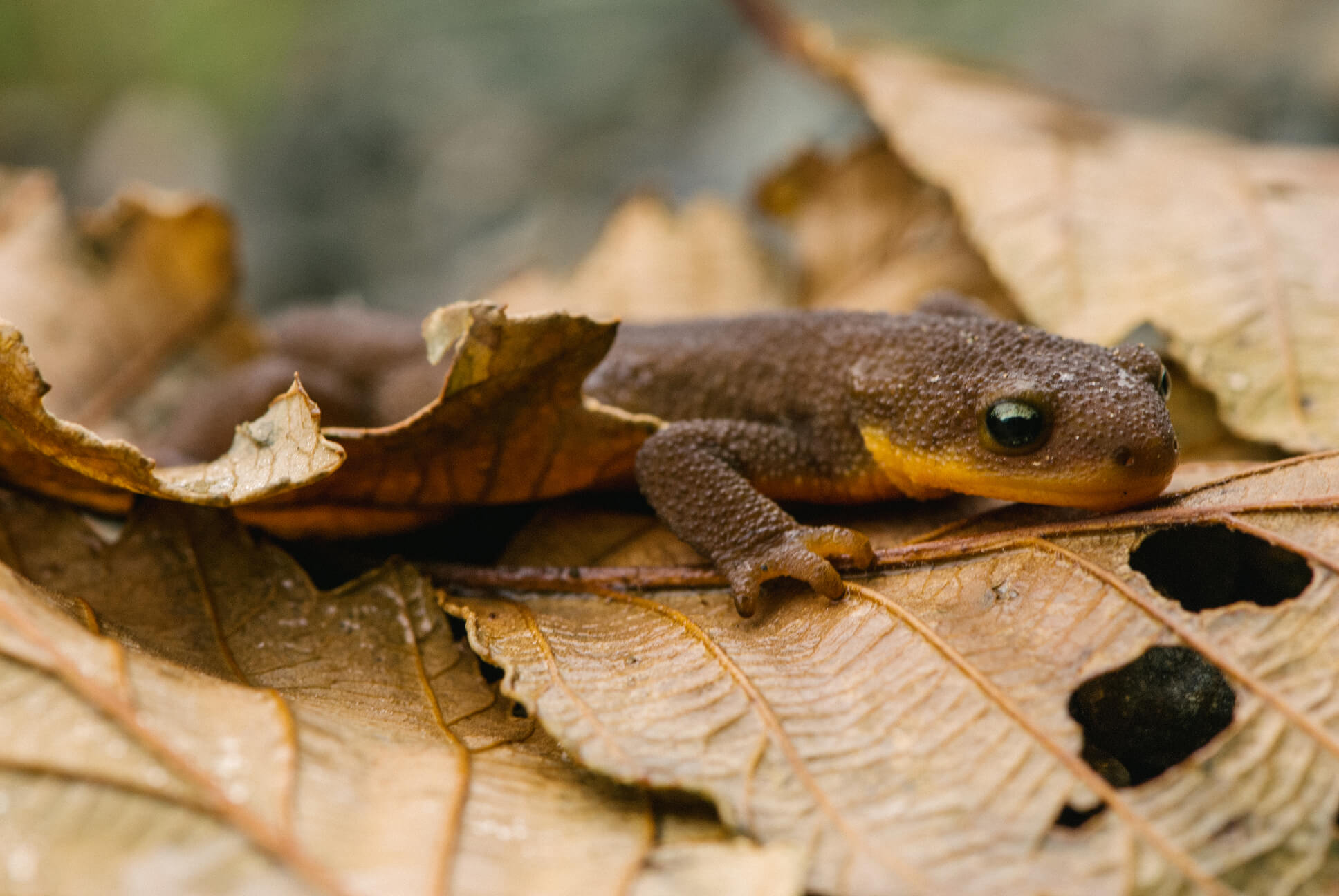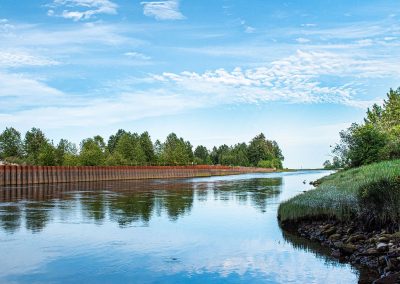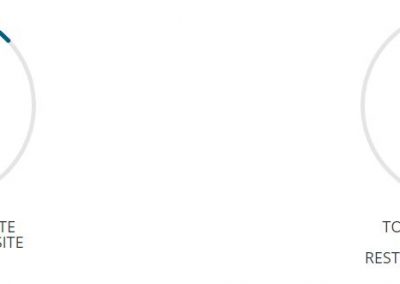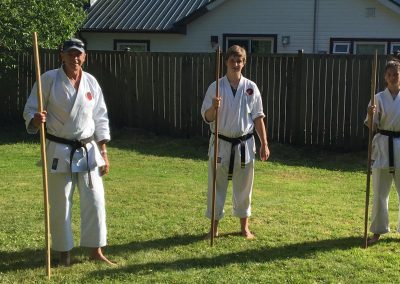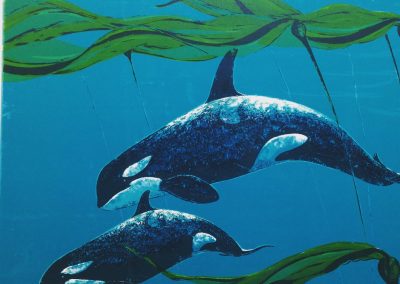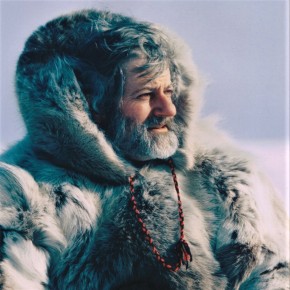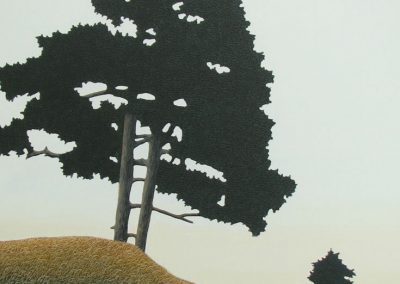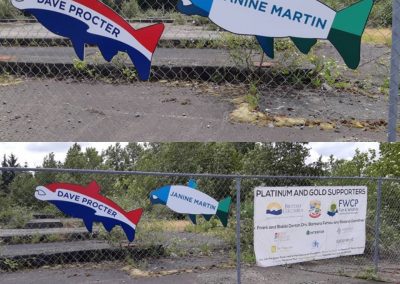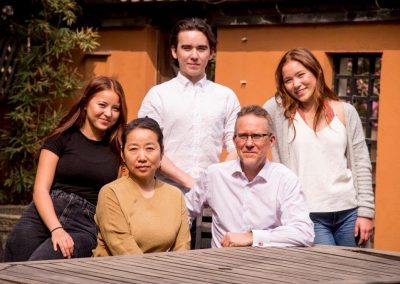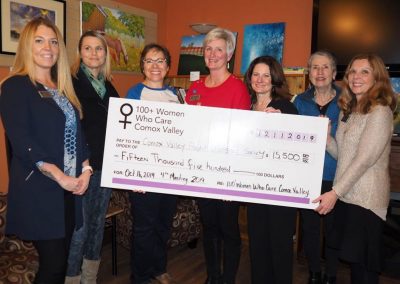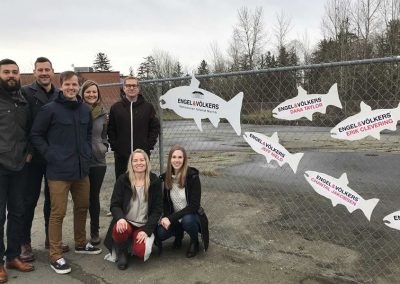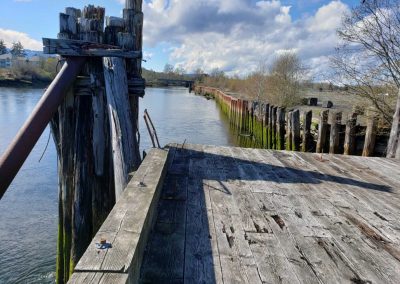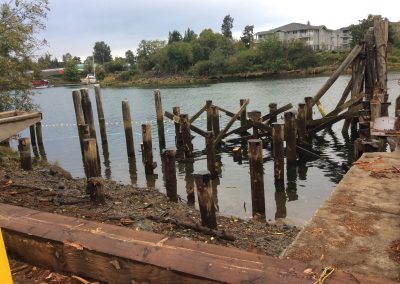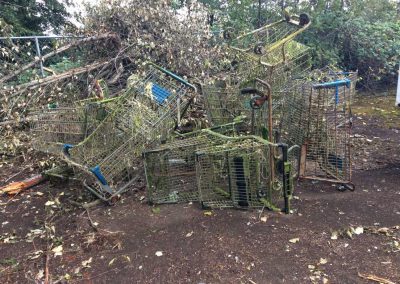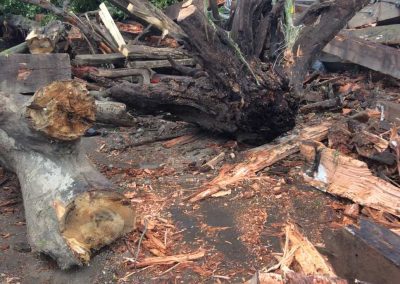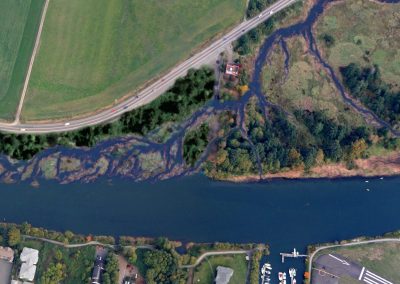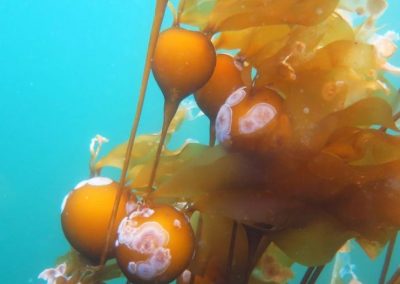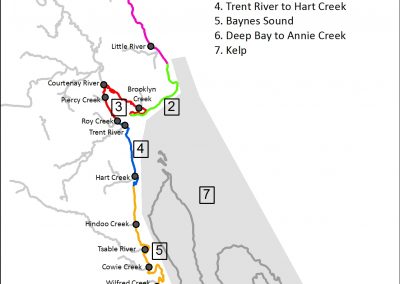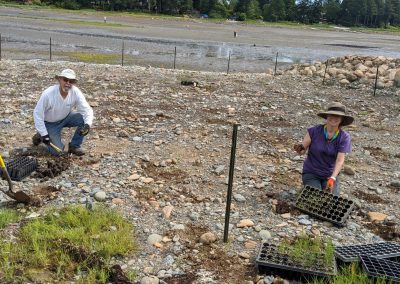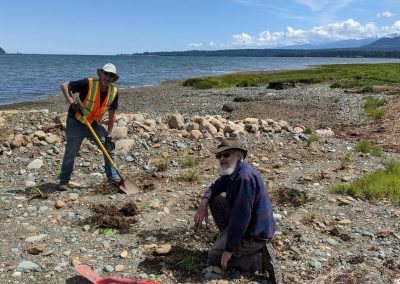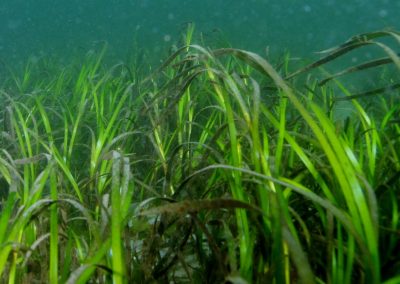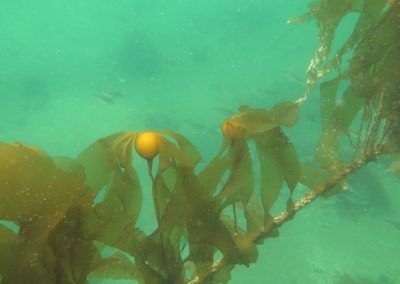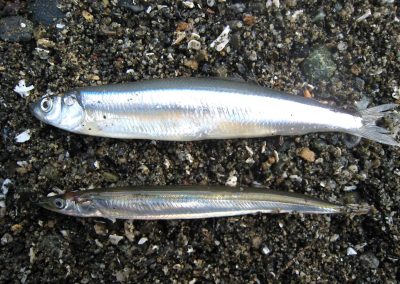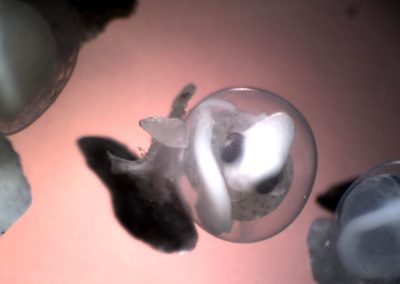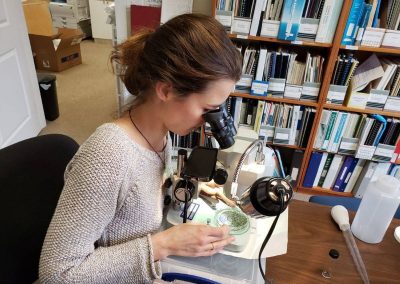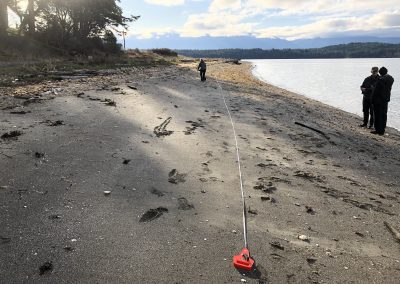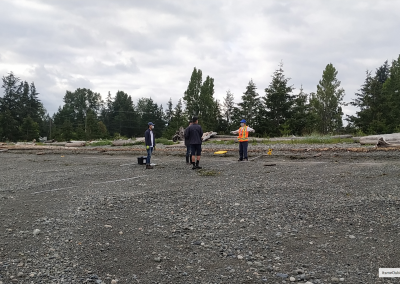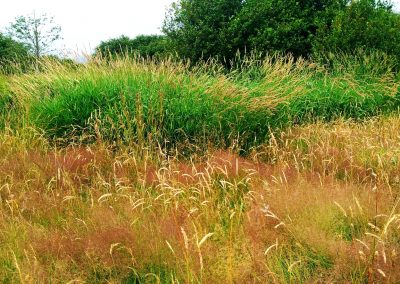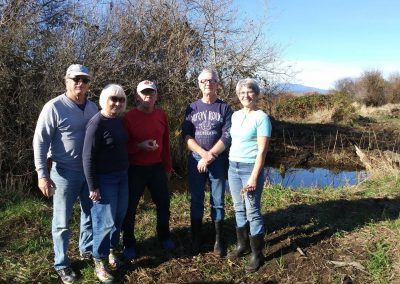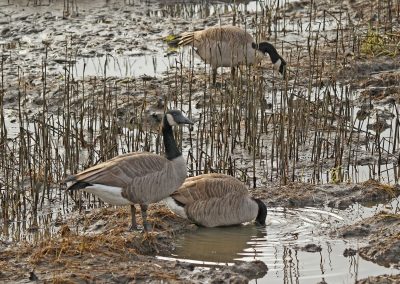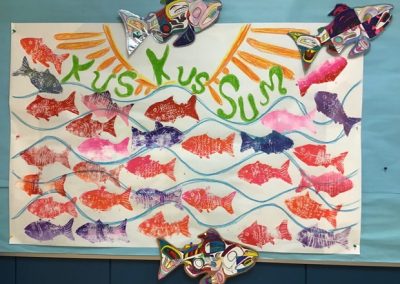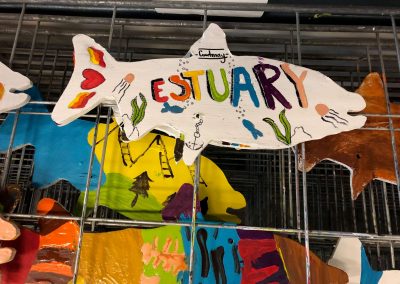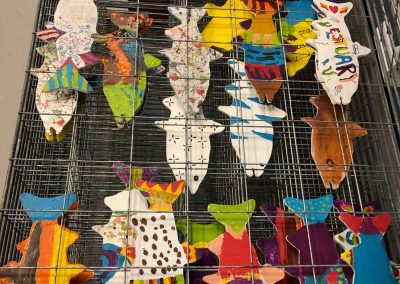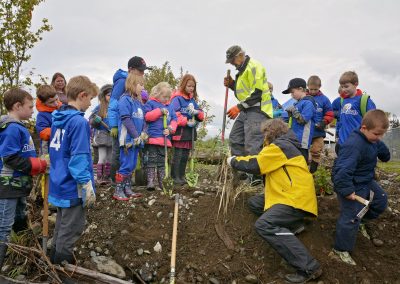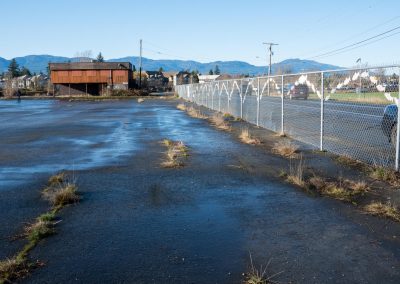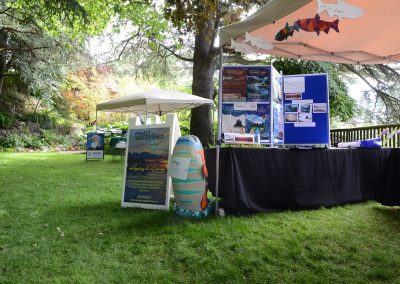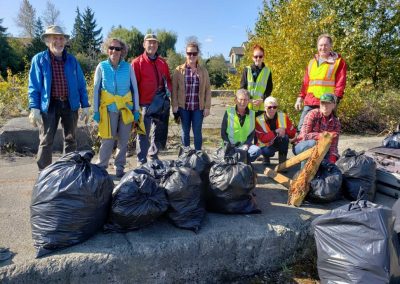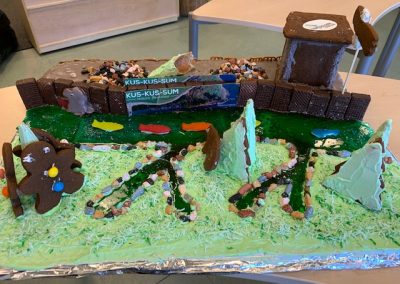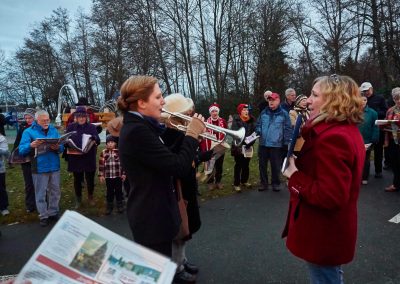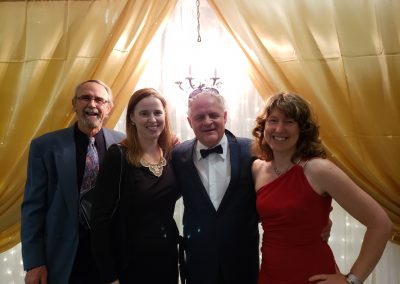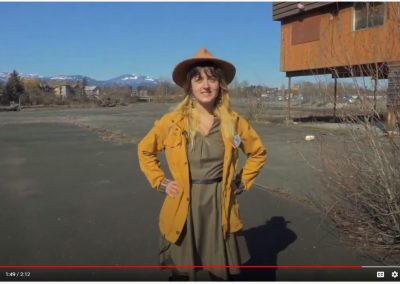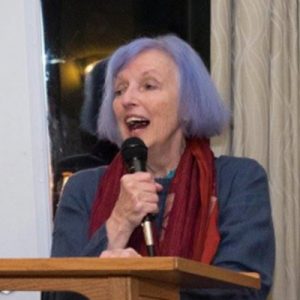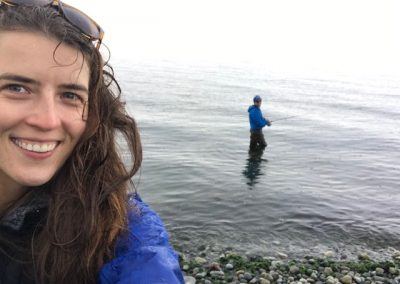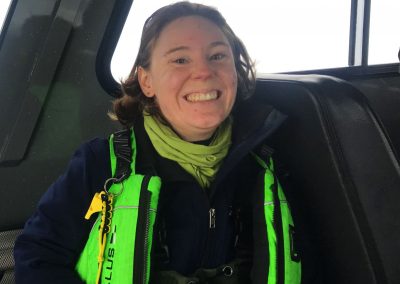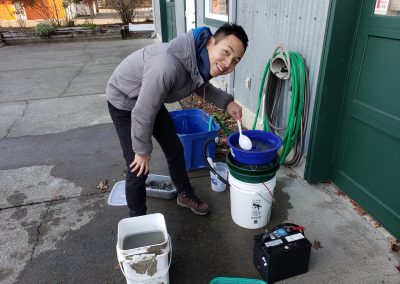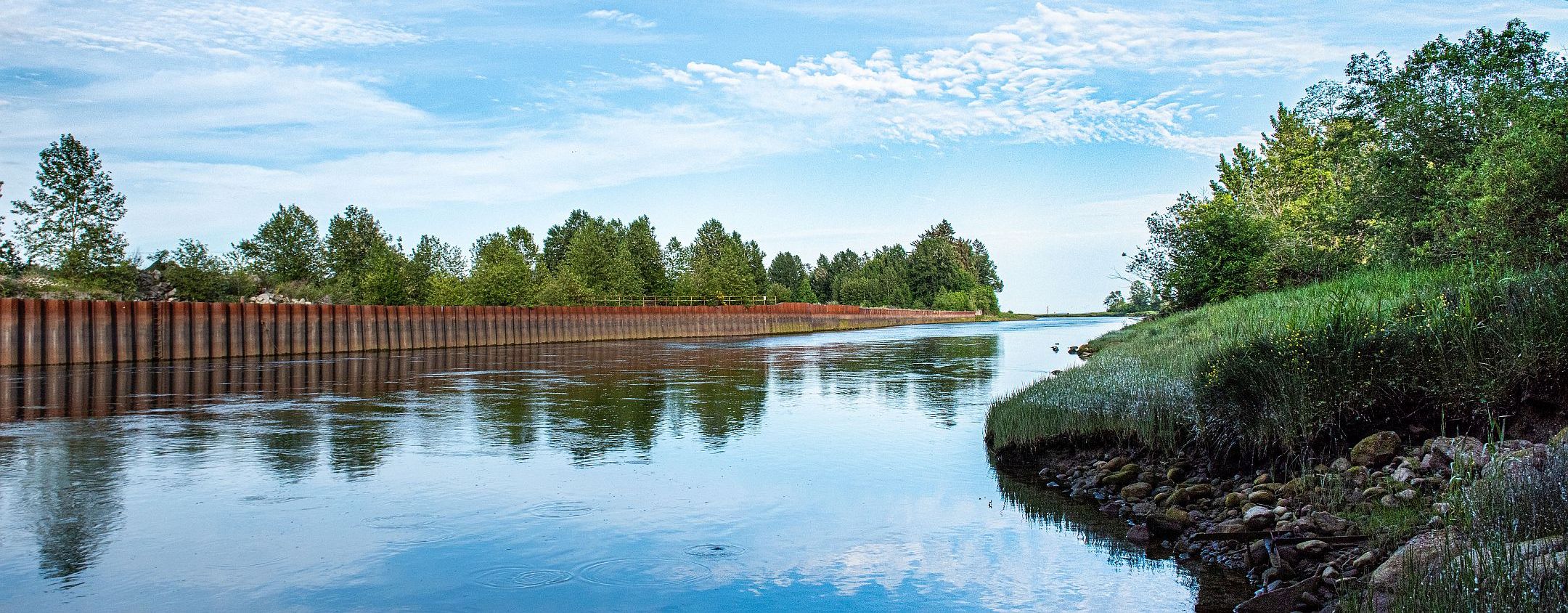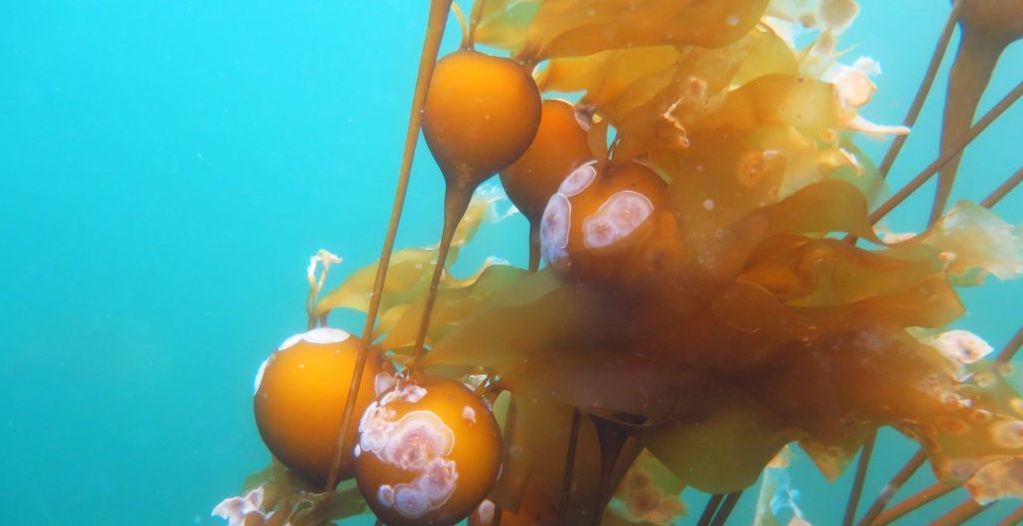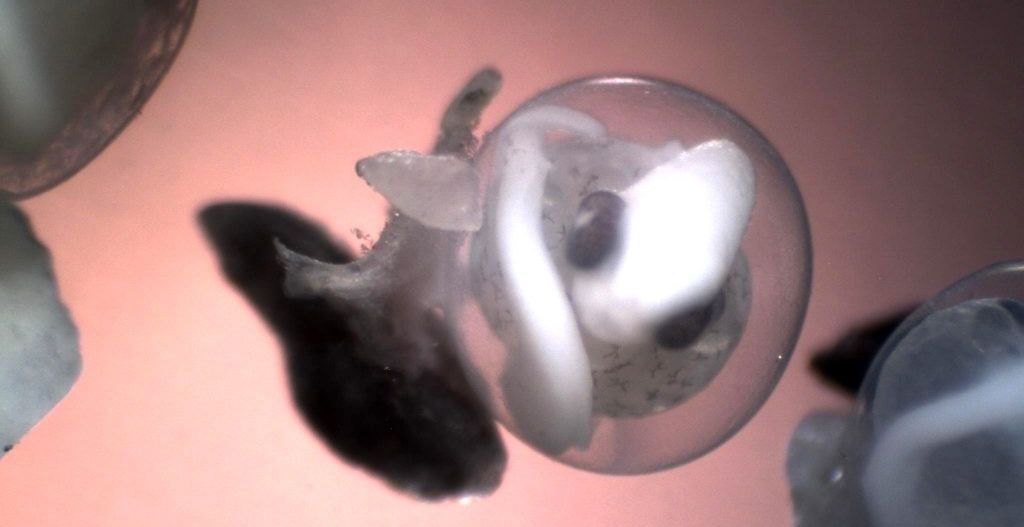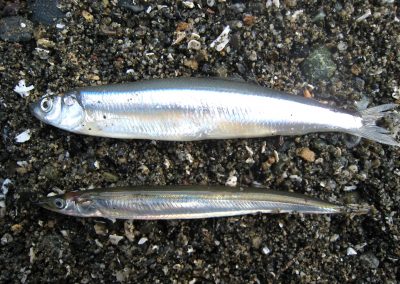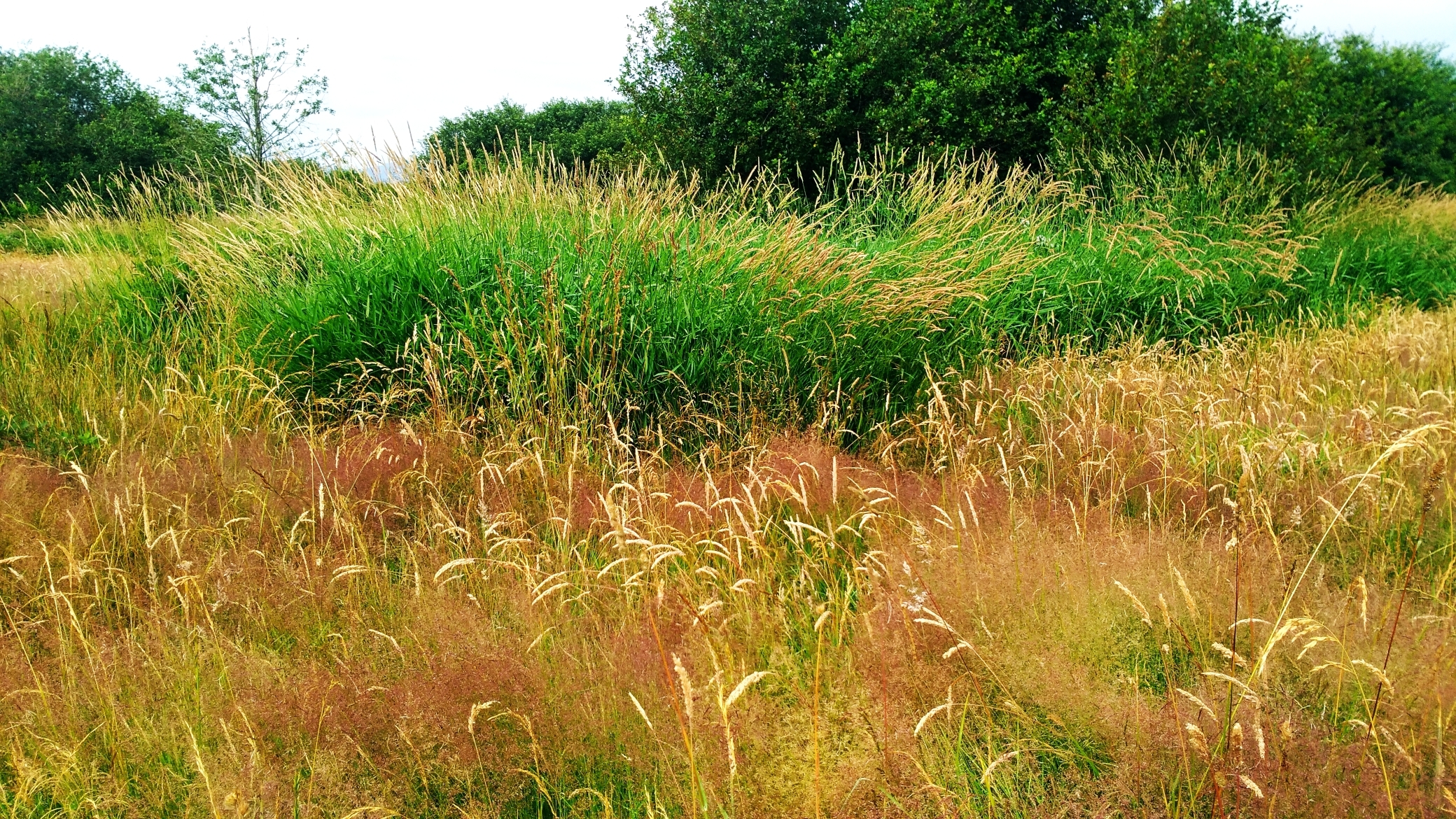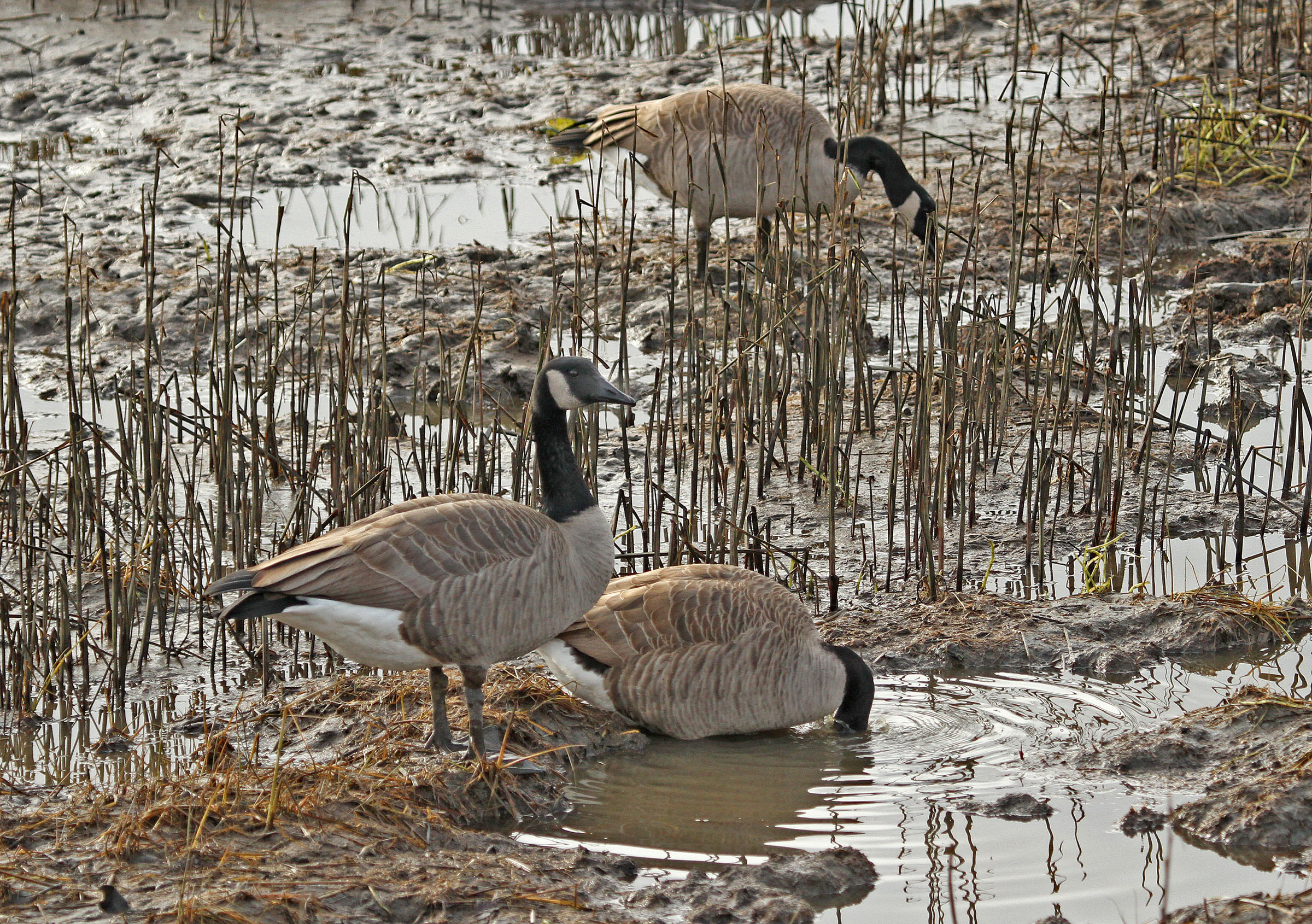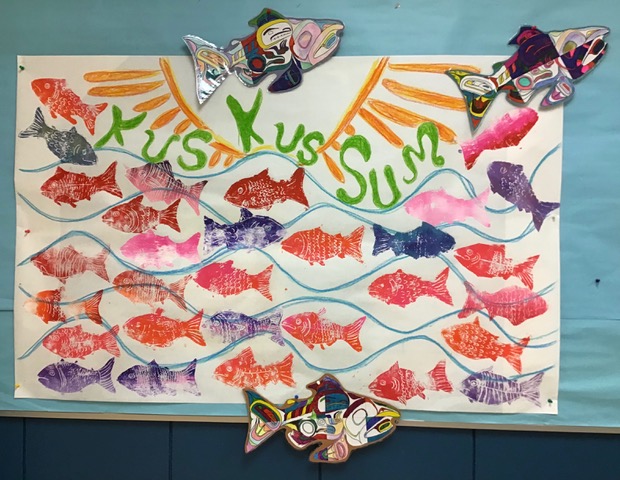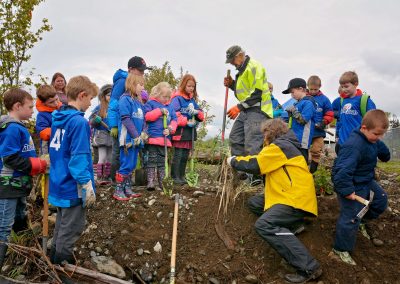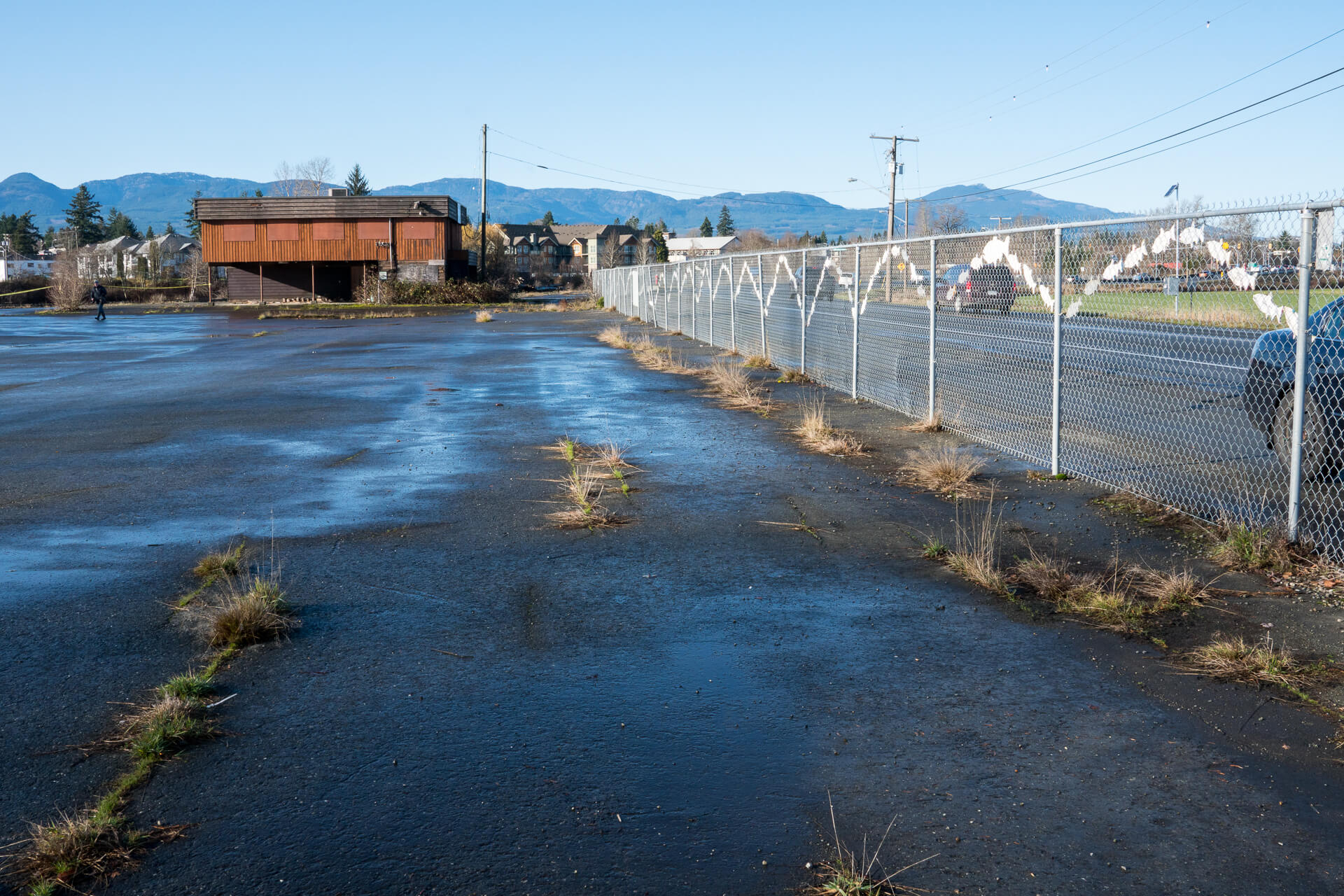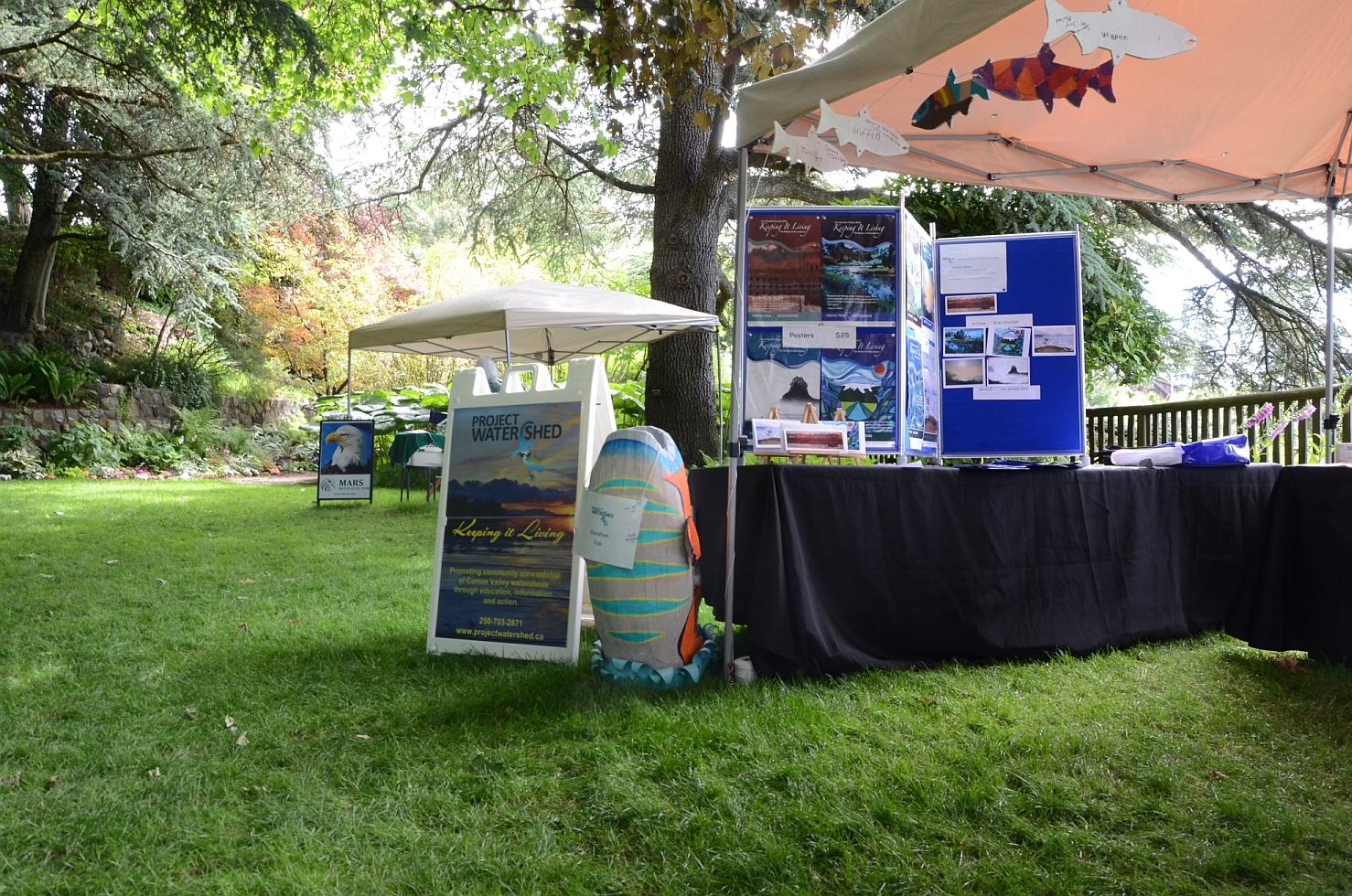Project Watershed’s 2020 Annual Report
Section Links
Kus-kus-sum
Human Resources
At the 2019 Annual General Meeting three new directors joined our board, allowing us to grow our skill set, capacity and broaden our perspective. We thank Lyle Carlstrom, Alisha Drinkwater and Pat Sloan for quickly becoming part of our team and for their service over the year. Late in 2019 Pat Sloan took on the position of chair and she has done a marvelous job since. All of our directors will be standing for their position again this year. For more information about each of them visit our Board Directory.
There have also been a few changes at the staff level. Virginia East, who has a background in environmental education, has joined our team as our Forage Fish Assistant. She has been integral to creating and maintaining our forage fish citizen science groups, collecting forage fish information, and carrying out other fishy tasks. Beatrice Proudfoot who was our Program Coordinator and Biological Assistant, has left and we are in the process of hiring another person for her position. Bea joined us last year and readily became an integrated and important staff member. We hope to see her in the future. In the meantime, Nhan (Young) Nguyen, has come back to Project Watershed to help in this period of transition. Young was a Co-op student that worked with Project Watershed last fall. He was an asset to our team and was chosen as co-op student on the year. For more information about our staff click on the Staff Directory.
Please note that our offices are still closed as our staff are doing the majority of their work from home. If you need to pick something up from the office please email info@projectwatershed.ca to set up an appointment.
Our other important human resource is our dedicated and caring volunteers. We would like to thank everyone for all the time and energy that has been put into our projects and initiatives. A special thank you to all those who have helped us during COVID. We look forward to all the things we will accomplish together over the next year.
Project Watershed began fundraising for the acquisition and restoration of an abandoned sawmill site, now known as Kus-kus-sum, in September 2017. Since then over $2.8 million dollars has been raised for this cause. The support for this initiative from our community and those with ties to the community has been overwhelming and heartening – visit Friends of Kus-kus-sum to view the most current list of donors. The $1 million dollars from the Provincial Government was a great boon to the project.
On June 30, we made a $200,000 payment to Interfor Corporation. As we did not have the funds to complete the purchase at this time, we negotiated to extend the closing date. Our next payment deadline is August 28. Presently, we have approximately $700,000 to raise by that date. One of our Estuary Angels committed to matching $50,000 of donations in April – presently $20,000 remains to be matched. In addition to this gift, the Sitka Foundation has pledged $75,000 to the acquisition. We, along with the K’ómoks First Nation and our community’s government representatives, are working on leads with the Federal Government and other sources to raise the remaining funds.
Project Watershed would like to thank all donors who have contributed to Kus-kus-sum over this past year and we would especially like to thank Alexandra Calland, Dave Procter, Janine Martin, the Li-Grimmer Family, Ngan Page Family Fund, The Maple Cross Fund, The 100+ Women Who Care, the Engel & Volkers Team, Thomas Wilson and our anonymous Estuary Angels. We are closer than ever to unpaving paradise!
A variety of third party events were thrown in 2019/2020 for Kus-kus-sum including LIFT’s Festive Cheer, The Paddlers Club Martin Ryer Fundraiser, Silver Bowerbird Gallery & Studio Open House, Pacific Board Art Fundraiser, Celtic Cargo Cult at the Mex Pub, IPF’s Bend & Flow Yoga for Kus-kus-sum, a Run to Beer fundraiser, and Toshikan Traditional Karate and Kobudo’s 108 kata. Project Watershed thanks everyone involved in a third party fundraiser for helping us raise funds and reach new audiences.
With the help of a number of well known local artists Project Watershed ran the Keeping It Living Art Show at Bayside Cafe to raise funds for Kus-kus-sum. The show ran from October to November 2019 and raised over $6,000. Our next large fundraising event for this initiative is the Paintings, By the Numbers event which has been rescheduled for September 12. The event has already raised over $25,000. Unfortunately, all our other fundraising events were canceled due to COVID-19. This included a fundraising and cultural event being organised by the K’ómoks First Nation. We look forward to working on this event with the Nation in the near future.
An exciting event that took place late last summer was the removal of the dock, dolphins and pilings from the waterfront of the Kus-kus-sum site. This was work Interfor needed to complete before transferring the water lots with the sale of the property. The process went smoothly and much garbage and trash was removed from the site and water area, including 11 grocery carts. Some pieces of large woody debris were also removed from the river. These elements are being stored on site and will be used to help complex the new shoreline area and Hollyhock connection channel during the restoration process.
Funds permitting, Project Watershed plans on initiating the restoration of the site this fall, starting with the demolition of the condemned office building that sits on the property. We also plan to remove a portion of the concrete. Currently, our Technical Team is working with Northwest Hydraulics Consultants to develop a detailed restoration prescription and hydrological model for the restoration. Once this is completed and approved by our board we will share it with the public.
Kus-kus-sum Page
Friends of Kus-kus-sum
Donate
Sponsor a Business Salmon
Latest Kus-kus-sum News
Winter works at Kus-kus-sum
Project work at Kus-kus-sum isn’t taking a holiday break. In early January, you may have seen some large machines near the wall – we got some excited phone calls about this! However, they were not there to start removing the wall, they were there to take important soil cores to analyse a patch of soil near the wall.
Planting Success at Kus-kus-sum Fall/Winter 2023
A huge thank you to all our industrious volunteers and supporters who came out to assist with our fall planting at Kus-kus-sum!
Kus-kus-sum Planting Fall 2023
We are getting thousands of plants delivered to the site this week and are looking for volunteers to help get them in the ground before winter.
In 2019, Project Watershed published the Salish Sea North East Vancouver Island Salmon Highway (Nearshore Habitat) Coastal Restoration Plan as a required part of a Coastal Restoration Fund grant. This was a$589,000 grant from Fisheries and Oceans Canada. The plan identifies 70 potential nearshore habitat restoration projects along 120 km of the east coast of Vancouver Island – one of which is the saltmarsh restoration of Kus-kus-sum.
The other annual Coastal Restoration projects listed in the plan focus on the restoration of saltmarsh, kelp and eelgrass. Over the past three years, Project Watershed has been working diligently to tackle these projects which are spread between the Oyster River and Annie Creek (near Qualicum Bay). In 2019-2020 the projects have included two planting areas of saltmarsh along the shorelines, we planted 3000 plants in Royston and 2500 plants south of Ships Point. We have also completed planting over 2000 sq m of subtidal eelgrass transplants at the Bowser lagoons and fronting Miracle Beach Park using our contract SCUBA divers. Thanks to the over 30 volunteers that helped out with all these projects and thanks to Jennifer Sutherst, Staff Biologist, who kept us on budget and on time, supervised the work and did the final annual reports.
Over the next two years we plan to continue our Bull kelp restoration and research, and undertake more saltmarsh and eelgrass restoration projects based on high priority projects identified in the coastal restoration plan.
In addition to identifying restoration projects, our coastal restoration initiative created the opportunity for Project Watershed to establish important connections and good working relationships with three First Nation Bands, and three of the largest stewardship groups in the area. In an effort to empower these stakeholders, we have developed a Citizen-Science Saltmarsh and Eelgrass Monitoring Program. The program gives volunteers and community groups all the information, materials and support necessary so that they can help us monitor our restoration projects. We also have volunteer divers helping to monitor our kelp work through the Reefkeepers Program.
Coastal Restoration Page
Coastal Restoration Plan
Donate
Latest Coastal Restoration News
Salish Sea Kelp Restoration Enhancing Habitat Connectivity
A kelp forest is a type of nearshore aquatic habitat, found along rocky coasts with wave action or strong currents in depths of 4 to 20 meters.
Project Watershed Continues Restoration Work Along Mallard Creek
Back in February, Project Watershed and volunteers from Aecon Water Infrastructure Inc. planted over 100 native species along a section of Mallard Creek.
Citizen-Science Saltmarsh and Eelgrass Monitoring Program
The monitoring program provides volunteers and community groups with all the information, materials and support necessary to help us monitor our restoration projects.
Project watershed has formed a scientific partnership to collaborate on forage fish research. Forage fish are small schooling fish that form an important part of the marine food chain and they are prey for many other marine species. Some of these forage fish, specifically Pacific sand lance and Surf smelt, spawn on beaches in our area. In order to protect these gravelly nurseries and support larger marine life, we need to know where they are. To this end Project Watershed has created a citizen science initiative in which small groups of trained volunteers survey beaches in search of eggs.
The current program is a community partnership with K’ómoks First Nation, North Island College, and BCSRIF (BC Salmon Research and Innovation Fund). Many changes and advances have occurred and Project Watershed is now training citizen science groups in the latest methodology. Two types of beach surveys are being performed, one of which is carried out every 2/3 weeks on specific beaches that have a high potential due to certain physical characteristics. Once eggs are found on one of these beaches, a beach blitz survey is initiated where a variety of beaches are surveyed all at once. These surveys are done with both citizen scientists and technical staff.
We now have groups surveying beaches in the Comox Valley, Cortes Island, Hornby Island, and a small team on Quadra Island. Currently, we are looking for more volunteers to survey beaches in Campbell River and on Quadra Island.
Eggs have been found at 10 of the 23 beaches surveyed between November 2019 and Summer of 2020. Of these, six are beaches that were never previously reported as supporting forage fish. We are also connected to a variety of forage fish groups on the island and beyond, creating a network of citizens concerned about forage fish and a repository of information.
In addition, we are working with graduate students to determine where Pacific sand lance are burrowing in the subtidal areas and where forage fish are schooling and feeding in the open ocean. The plan is to produce a forage fish biodiversity ‘hot spots’ map to better guide conservation and management decisions.
Donate
Latest Forage Fish News
Pacific Sand Lance Day Success
December 8th was the first annual Pacific Sand Lance Day!
These skinny forage fish are understudied and important to our coastal ecosystem. Sand lance have over 100 known predators, and are particularly important to nesting sea birds. This eclectic fish buries into sandy sea beds, hibernates all winter, and spawns on beaches!
The Spawn is On!
Pacific sandlance eggs ~ Aaron SchmidtBeach survery ~ Tom GrimmerSand sample under microscope ~ Aaron Schmidt Our winter Pacific sand lance season was kicked off with eggs being found on Cortes Island on November 6! Later in the month eggs were found at Shingle Spit...
Going Forage Fishing, Winter 2023/2024
The weather is looking like fall and with the brief skiff of snow recently Project Watershed staff are beginning to look to the winter forage fish season.
Reed Canary Grass
Reed canary grass
Reed canary grass is a growing problem in the Comox Valley and many other coastal communities. Since 2004, it is estimated that the amount of reed canary grass in the K’ómoks Estuary has tripled. It is an invasive European cultivar that was brought in with agricultural practices. Unfortunately, it provides little value for native wildlife or insects, and has a high growth rate.
Last year, with funding from the Fish and Wildlife Compensation Program, Project Watershed mapped and inventoried reed canary grass in the K’ómoks Estuary to determine the size and scope of the problem and develop a plan to manage and control it. As a start, we removed patches of the grass along Mallard Creek. We also ran test treatments, specifically mowing, mowing/shading (with cardboard) and digging it out, and shading it with willow staking to investigate the effectiveness of each treatment. Our findings suggest that a combination of mowing, shading and staking with willows may be the most effective treatment. Regardless, it will take many years of working to control this invasive to deplete the seed bank and establish more natural streamside vegetation.
Reed Canary Grass Page
Latest Reed Canary Grass News
No Results Found
The page you requested could not be found. Try refining your search, or use the navigation above to locate the post.
Resident Canada Geese
Resident geese grazing on saltmarsh
Gerry Fairbrother
While we have not spent much time on this subject over the past year, we have met with concerned groups and kept abreast of developments in this field. In particular, we have been keeping informed on the work the Mid-Island of the Estuaries Society has been doing in our local estuary and others to help control the numbers of geese and restore the habitat they have impacted. In our estuary the K’ómoks Guardians have been installing fencing to prevent resident geese from feeding on saltmarsh plants. These areas have been replanted to allow the establishment of this important vegetation. In other estuaries the Guardians have been doing egg addling to try and curb the rising numbers of resident geese (the K’ómoks Estuary does not have a lot of active nesting sites, and those that are in the area are hard to get to).
Resident Canada Geese Page
Latest Goose News
No Results Found
The page you requested could not be found. Try refining your search, or use the navigation above to locate the post.
Education Initiatives
As part of our 2019 Students Keeping It Living in the K’ómoks Estuary education program over 380 students participated in an estuary presentation and/or field trip. Most of these students then had the opportunity to paint a wooden salmon. Over 300 of these salmon have been sponsored and placed on the fence at Kus-kus-sum – raising over $15,000 and much awareness for the project. Project Watershed will be putting up the last of the salmon on the fence at Kus-kus-sum in August – we have 8 painted fish waiting to be sponsored and 9 unpainted fish waiting to be sponsored and painted. Sponsor one today or contact support@kuskussum.ca for more information.
We received funding from the Comox Valley Community Foundation and the Comox Valley Regional District to run the program again during the spring/summer of 2020. The program has become quite popular and we had a variety of classes from Miracle Beach, Arden, Aspen, Huband, Robb Road, Valleyview, Puntledge and Navigate NIDES sign up for presentations and field trips. While we were able to visit Robb Road the rest of our presentations and field trips had to be postponed due to COVID-19. We are working with teachers to explore our options for presenting our environmental education program in the fall. There are many options available and the ones we choose will depend on the state of the COVID pandemic and the comfort level of each class/teacher.
Fortunately, we had already developed a variety of resources for students from Kindergarten to Grade 7 and made them available on our website. We were able to share all these resources with teachers across the district so that they could share them with students and parents forced into homeschooling.
Sponsor a Salmon
Resources K - 12
Community Events and Outreach
Project Watershed booth at Seafood Festival – Virginia East
Upcoming Events
No Results Found
The page you requested could not be found. Try refining your search, or use the navigation above to locate the post.
Prior to the lull in events over the last few months Project Watershed has been busy hosting and attending events since our AGM last May. These have included:
- Project Watershed’s 2019 Wrap Up Party – where we thanked volunteers and donors and wrapped up the Keeping It Living Artshow at the Bayside Cafe
- Working with the Youth Media Project to produce a variety of project related videos
- Managing booths at Seedy Saturday, World Community’s Film Fest, Puntledge Hatchery’s Open House, and the Seafood Festival
- Participating in the Youth Climate Action event and The Climate Crisis: Place-based Adaptation & Resilience event
- Being nominated for a Comox Valley Chamber of Commerce Award and attending the Gala
- Running our 9th Annual Carol Walk
- Doing a huge Shoreline Cleanup at Kus-kus-sum – 24 people participated and we collected around 300lbs of garbage
- Hosting a very successful Salmon BBQ at 40 KNOTS
- Co-ran a raffle with Queneesh School and helped them create a Kus-kus-sum gingerbread model for Crown Isle’s Gingerbread House event
Calendar
Related Posts
Forage Fish Sampling – Spring/Summer 2024
Forage fish sampling is starting back up again in May!
Spring Planting and Weeding at Kus-kus-sum
We will be planting some potted plants and weeding in the upland areas of Kus-kus-sum.
Forage Fish Symposium
The forage fish team has been busy planning the Coastal Forage Fish Network Symposium. Hosted on Zoom, this event brings together researchers, experts and community citizen science volunteers to share research highlights from across Vancouver Island and beyond.
Kus-kus-sum Spixls – Restoration Time-lapse
Luke Phillips from LSP Media has helped us create what he is calling Spixls – crowd sourced time lapse photo documentation of a site.
Eelgrass Expansion in Baynes Sound
This summer, Project Watershed staff and volunteers will be getting their feet wet to increase habitat connectivity in Baynes Sound. As part of our multi-year Aquatic Ecosystems Restoration Fund project, we will be conducting an eelgrass transplant off the coast of Gartley Point near Royston.
Eelgrass Washer Tying 2024
We have a new and unique volunteer opportunity: washer tying for eelgrass restoration! You can participate in this hands-on activity by signing up below and stopping by our office to pick up the necessary supplies between 10am – 3pm Monday – Thursday.

